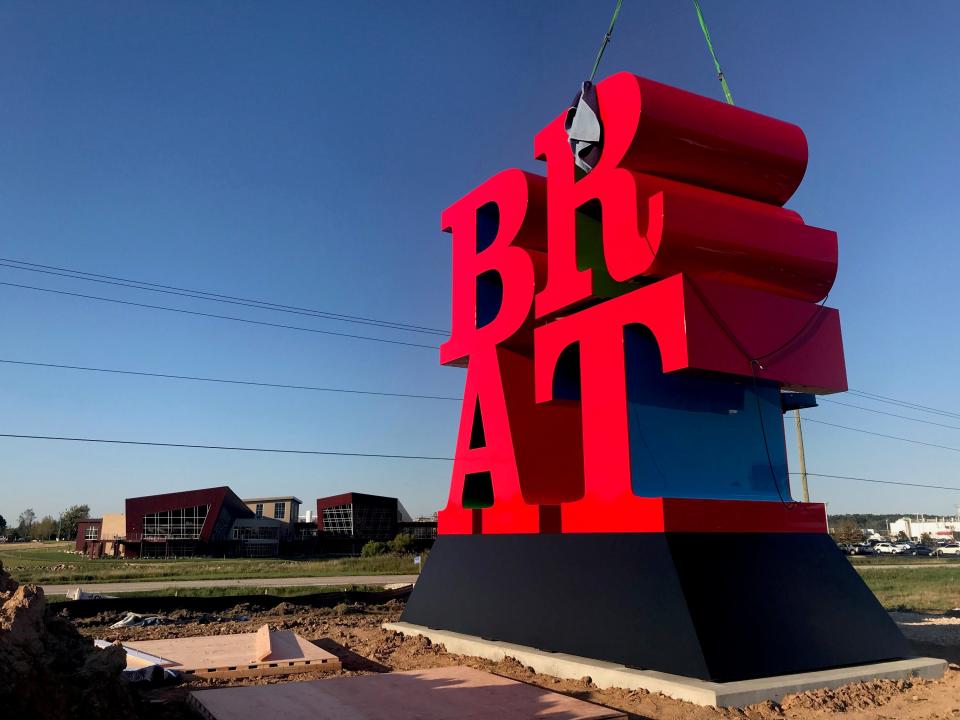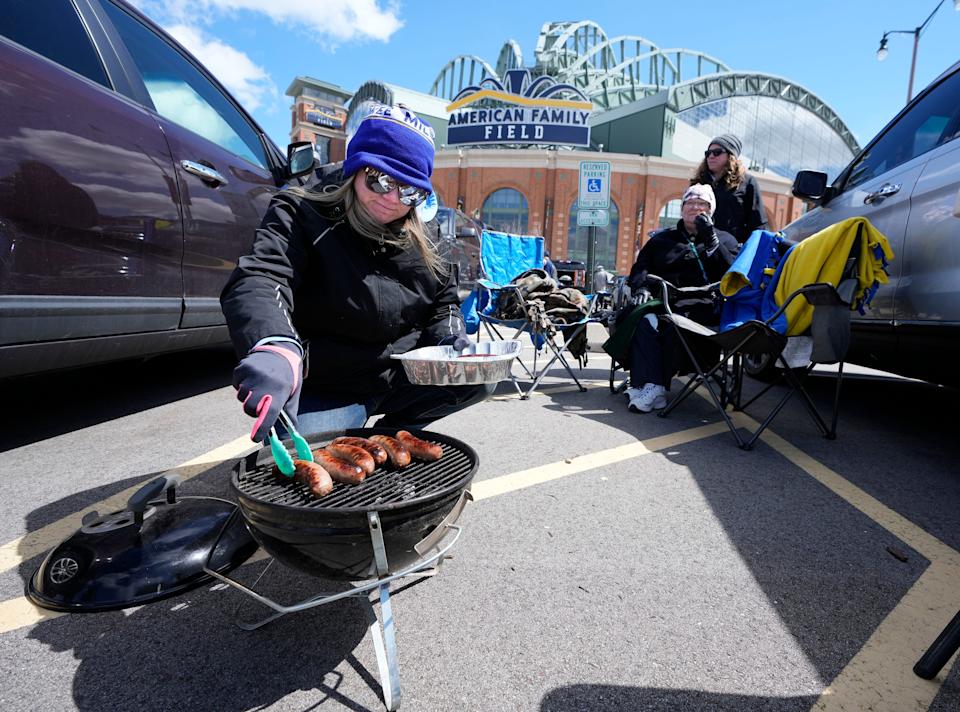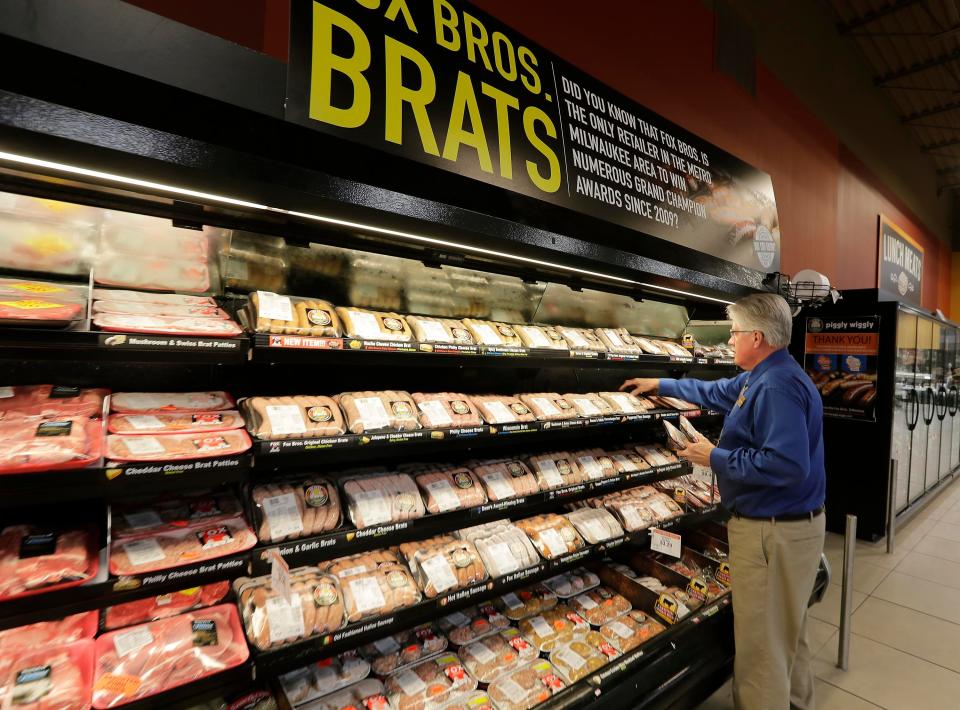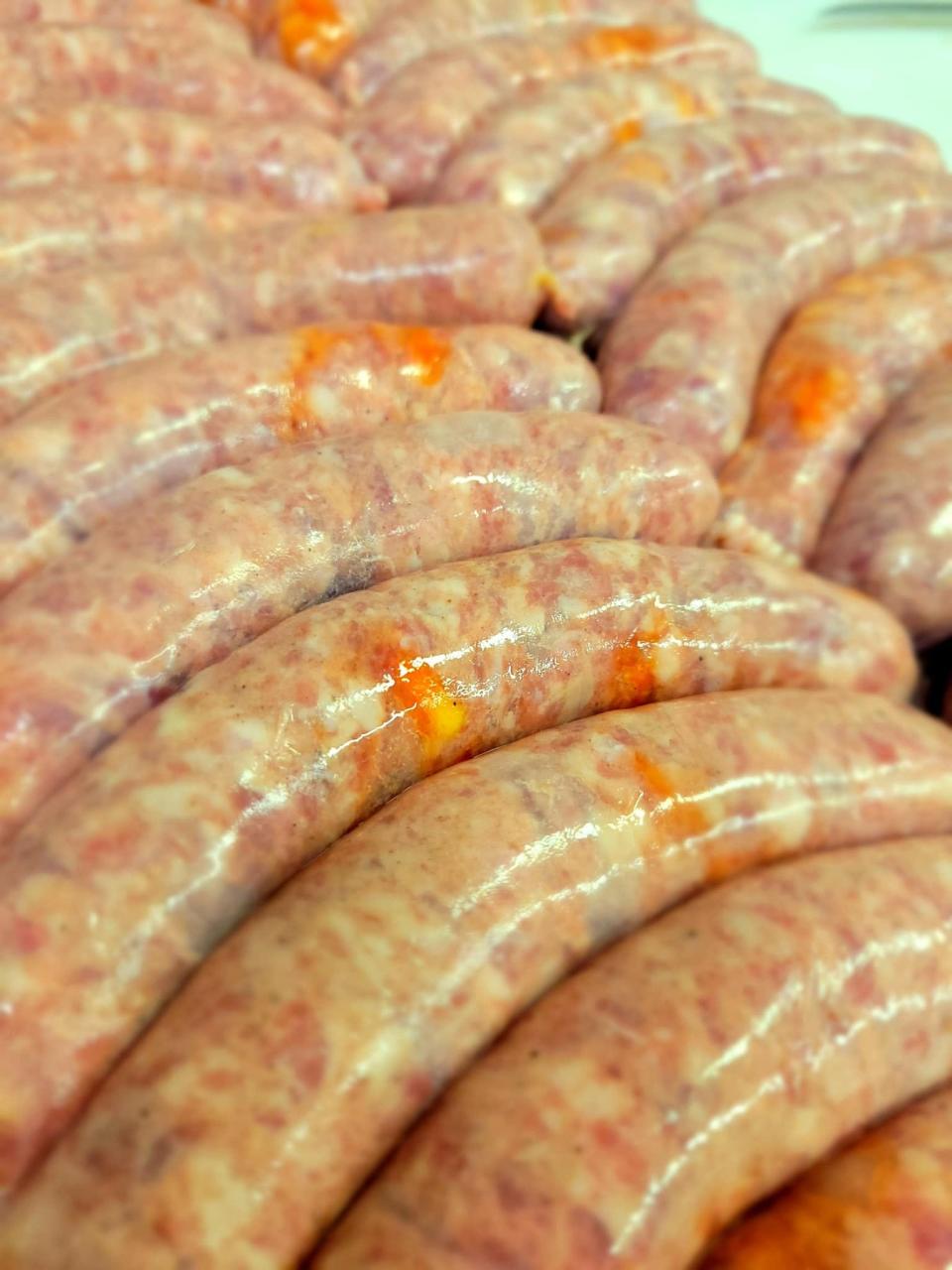What makes a brat a brat, and why are they so popular in Wisconsin?
Wisconsin is known as the land of beer and cheese — but brats are often next in the hierarchy of state foods.
So how did brats get into the mix?
And what exactly makes a brat different from any other kind of sausage you might put in a bun and top with mustard?
We spoke with brat makers ("wurstmachers," if you're German) from small Wisconsin meat markets to big-name companies like Usinger and Johnsonville to to learn more about brats as part of our What the Wisconsin? series that explores readers' questions about our state.
A brat contains specific spices and coarsely cut meat
What makes a brat a brat, and not some other sausage, are two main components. One is the spices that are used, and the other is the use of coarsely cut meat.
"The bratwurst is really a family, and within the family there are a ton of different variations," said Fritz Usinger, owner of Usinger Sausage Company in downtown Milwaukee.
The first variation comes from the specific set of spices used. According to Usinger, they usually have a combination of the following: pepper, an aromatic spice like nutmeg or coriander, and a citrus component, like lemon zest.
That means no, Italian and Polish sausages, which have different seasonings — garlic and fennel, respectively — are not really brats.

"Everyone in the Midwest might call it an Italian brat, but that's just a Midwestern thing," said said Ralph C. Stayer, owner of Johnsonville sausage company.
The meat of a bratwurst is usually pork. Veal or beef can be added as well. Brat meat is cut more coarsely and then sealed without the use of curing salt.
The lack of curing salt is what gives brats a light pink or gray color, compared to the bright pinkish-red of cured meats like ham, bologna and hot dogs.
Modern-day brats are sometimes precooked or smoked to make things easier on the person who is grilling, but Usinger and Stayer say raw brats are best.
How to make a brat: Grill it longer and don't parboil
Brats that are precooked are simply thrown on the grill and ready to serve after they get an outer char.
If you get raw brats, the trick is to make sure they do not burst from getting too hot too quickly.
Some people prefer to parboil brats to assure this does not happen, and then cook them a second time on a grill to get the outer char, but Usinger said you can lose flavor this way.
He has a very German/Wisconsin method to cooking brats.
"I call it the two-beer method. By the time you slowly drink two beers is about the time it takes," Usinger said.
For beer one, the brats should be on the outer edges of the grill and rotated often, which cooks the meat more slowly.
Once the griller is on their second beer, they'll want to start moving the brat inwards to the center, hotter part of the grill, or turn up the heat of a gas grill.
Wisconsin's history with the bratwurst

As with many things in Wisconsin, we can credit our affinity for bratwurst to the state's strong German heritage. Milwaukee, after all, has been called the center of German culture in America.
The name bratwurst comes from German words "brat" meaning fried, and "wurst" meaning sausage, giving the most simple definition of what it is — a sausage that is fried (aka grilled).
The Usinger family has been making sausage in Milwaukee since they immigrated to the city when Fredrick Usinger left Wehen, Germany, in the late 1870s with $400 in his pocket and a pocketful of sausage recipes he learned in Frankfurt, according to the Usinger website.
At that time, many butchers with German heritage were making bratwursts in Milwaukee, each with their own slight twist, as in Germany, Usinger said.
Journal Sentinel archives from the beginning of the 20th century show bratwursts in every aspect of Milwaukee life, from the dedication of the Wisconsin Telephone Co. building on Fifth St. and Grand Ave., to the meals supplied for artillerymen by Gustave Pabst of Pabst Brewing Co. Brats also were on the menu at a 1940s picnic in Grafton where German-Americans rallied against Nazism, and they were provided as Milwaukee school lunches in the 1980s.
As bratwurst gains popularity around the country, Wisconsin is still 'brat central'

German immigrants to America brought with them a variety of foods, but the popularity of schnitzel and spaetzle has waned while brats have stayed strong, at least in Wisconsin.
"If you look at German-heritage foods, there aren't many that lend themselves to grilling," Stayer said. "People say, 'We're having friends over, let's grill brats,' and brats are more popular than ever."
The Midwest has long been accustomed to brats, but only recently they have become available in markets outside of America's heartland, Stayer said.
Stayer's parents, Ralph F. and Alice Stayer, started the company as a butcher shop in Johnsonville in 1946. Once their son took over in the 1970s, he focused on growth outside of the state.
"We started to expand to neighboring states and then took our focus to warmer markets because we figure they have longer grilling seasons," Stayer said. "We know how good our brats are, and we want the rest of the country to enjoy them, too."
Johnsonville brats are currently available in every state.
More: Johnsonville brats: How a small town Wisconsin butcher shop joined the global sausage race
Eric Mittenthal, president of the National Council on Hot Dogs and Sausages, a sector of the U.S. Meat Institute, said they did not have a breakdown for individual types of sausage like brat versus Polish sausage, but consumption of dinner sausages has grown over the past decade.
"The pandemic made everything grow, retail is way up since the pandemic," Mittenthal said. "We've definitely seen the sausage category grow more and more popular while other products, like the hot dog, have stayed the same."
Even as brats have grown in popularity around the country, their role in Wisconsin culture is still unique.
"Certainly, brats are associated with Wisconsin nationally. It's seen as brat central," Mittenthal said. "I think it goes back to the culture. When you enjoy a brat in Wisconsin, there's a lot of sausage history there, and I think it's pretty well known across the country."

Wisconsin meat shops pushing brat boundaries
Wisconsinites who crave more novelty in their brats have options beyond the tried and true brat recipes.
Additions like cheddar and jalapeno are common in brats, and local meat shops sometimes have even more unique twists.
In 2021, Justin Strassman's candy corn brat sold at Jenifer Street Market in Madison went viral, appearing on the Today show and other national media outlets. He made it again in 2022, and plans to do so around Halloween every year.

"Everyone has a brat template, and the rest is really all about experimentation," Strassman said. "There's a lot of similarities in small meat markets and you have to figure out how to stand out."
Other unique brats that Strassman makes include a Wisconsin old fashioned brat with cherry and orange chunks, and the hipster brat, which includes kale and feta cheese and is boiled in pinot noir wine.
Some places, like Pelkin's Smokey Meat Market in Crivitz, advertise 70 flavors of brats.
To the displeasure of other sausage makers, Italian brats are included in that list.
What's What the Wisconsin?
Is there something about Milwaukee or Wisconsin that's been puzzling you? We've got experts who know how to find answers to even the smallest (and sometimes the most interesting) questions. When we can, we'll answer with stories. Submit your question at bit.ly/whatthewisconsin.
This article originally appeared on Milwaukee Journal Sentinel: What makes a brat different from sausage and why Wisconsin loves them

